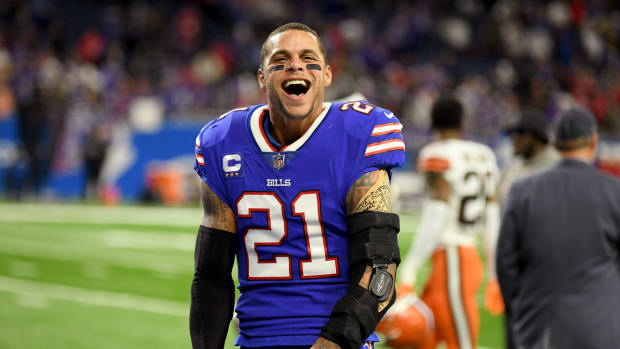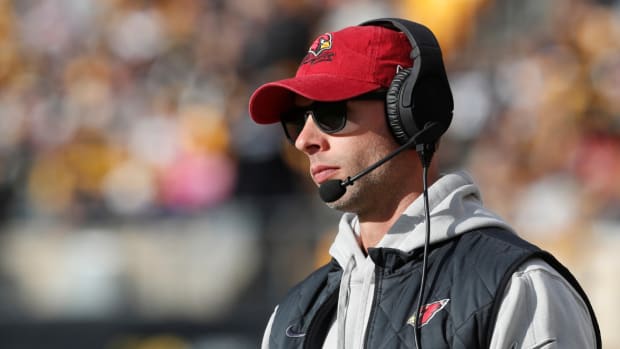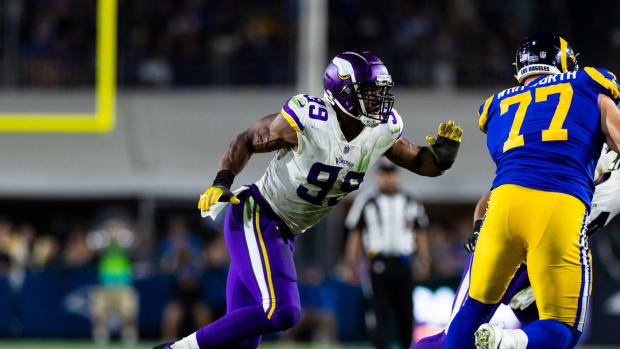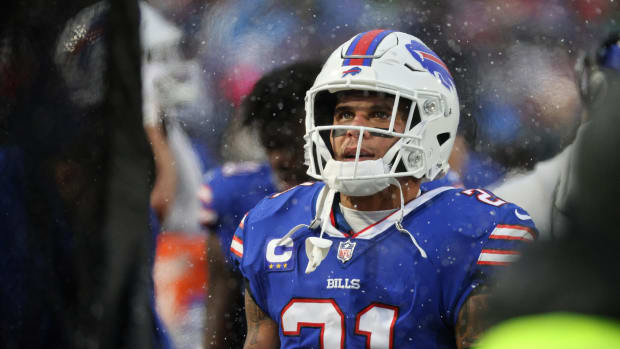Indianapolis Colts: 10 Things You Need to Know
1. Not one person within the NFL believes Andrew Luck is anything less than a superstar. (Or “elite,” if that’s your preferred phrasing.) Luck made more spectacular plays than any QB in the league last year. Problem was, he also had too many negative ones. Luck can curtail these and help his developing O-line, plus ward off the injuries that are starting to clutter his “work history” report, by getting rid of the ball quicker.
2. Here’s the paradox: what makes Luck special is his ability to extend plays. Most quarterbacks break down a play and go sandlot when they extend the action. Luck has an innate sense for merely prolonging the play. He is brilliant at understanding which routes beat which coverages late, and he consistently spots these by keeping his eyes downfield and moving within the pocket. His accuracy on tough throws is unbelievable. You remove all this when you have him get rid of the ball quicker. It’s a fine line that play-caller Rob Chudzinski must walk. How do you build a quicker passing game without compromising Luck’s greatest strengths?
3. Let’s also consider the possibility that Indianapolis’s O-line will get better at protecting Luck. That’s already begun, in fact. Starters Ryan Kelly (center), Joe Haeg (guard) and Le’Raven Clark (right tackle) have 16, 14 and three career starts, respectively. They have room to grow—and have started doing so. In the second half of last season, when Luck was under center, the Colts allowed 2.5 fewer sacks a game than in the first half.
4. Chudzinski, a former tight end at the University of Miami, loves to utilize his old position. Last season, the Colts led the AFC by playing two tight ends on nearly one-third of their snaps. Chudzinski has always been innovative out of two-tight end sets; he dominated defenses as the offensive coordinator in Carolina when he had Greg Olsen and Jeremy Shockey. How Indy’s two-tight ends sets go this season will hinge on Erik Swoope. The athletic third-year pro down has shown some ability to get open as a detached receiver. If he can build on that, the Colts will have a formidable tandem with him and H-back Jack Doyle.
5. Doyle, by the way, really fits the Colts’ running game. With Frank Gore, it’s predicated on inside runs behind various double-team blocks. Gore is great at reading his blocks. In Doyle, he has an on-the-move blocker who can attack defenders from unusual angles.
6. T.Y. Hilton led the NFL in receiving last year, but he’s not a pure No. 1. Because of his diminutiveness, the Colts must scheme ways to get Hilton open. They can’t regularly put him up on the line of scrimmage on the weak side (like you see with Julio Jones, Odell Beckham Jr., Dez Bryant and A.J. Green) because he has difficulty against jam coverage. That’s why you see Hilton go in motion and often run vertical routes out of the slot. (These tactics force corners to back off a yard or two.) Unimpeded off the line of scrimmage, Hilton can crank up to full speed in a hurry.
Monday Morning QB: Bucs GM Jason Licht ‘Owning Up’ to Roberto Aguayo Mistake
7. At the core, there are two schools of thought to defense. One is to run a simple scheme and allow your guys to play fast. The other is to run a voluminous, complex scheme and overwhelm opponents mentally. Fast and simple requires an effective four-man pass rush, which the Colts don’t come close to having. (Their two best edge players, Jabaal Sheard and John Simon, would come off the field in passing situations for some NFL defenses.) A futile pass rush is never good, but Chuck Pagano and defensive coordinator Ted Monachino are equipped to compensate. Both men believe in high volume and complexity. The Colts do a lot of things from a lot of different looks—many of which are initially disguised. To play this way, you need rangy, versatile safeties, and corners who can win one-on-one (that’s what gives you the extra bodies to blitz with). It’s no surprise the Colts used their first-round pick on Ohio State safety Malik Hooker and their second-rounder on Florida corner Quincy Wilson.
8.Safety T.J. Green, drafted in the second round last year, has the size to fill against the run and the agility to match up in man coverage. He came along a little slower as a rookie than you’d like, but having better players around him could lead to a quantum leap in Year 2.
How the Atlanta Falcons Are Handling the Worst Loss in Super Bowl History
9. Indy might have the most unappealing linebacking corps in the NFL, but the additions of three veteran defensive linemen should help this D make some much-needed improvements against the run (the Colts ranked 30th in yards allowed per attempt last year). Ex-Giant defensive tackle Johnathan Hankins has excellent movement skills for his size. He can take on and shed blocks. Ex-Browns/Patriots defensive end Jabaal Sheard is one of the league’s best at working laterally down the line of scrimmage. He can also set the edge. And ex-Titan Al Woods can push intriguing young nose tackle David Parry for playing time. Woods has spent his career in a 3-4, but the more expensive Hankins and Sheard are both better suited for a 4-3. It’ll be interesting to see how the Colts structure their front seven.
10. The lack of depth at linebacker could mean we’ll continue to see the Colts play a three-safety, three-corner dime package in passing situations. Which makes Clayton Geathers’s slow return from a neck injury (he’ll begin the season on PUP) a real concern.
Question? Comment? Story idea? Let us know at talkback@themmqb.com




































